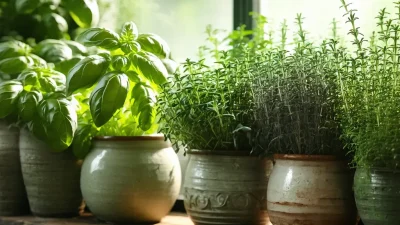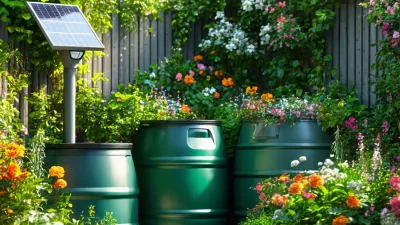How to Create an Edible Garden: A Step-by-Step Guide
Gardening is more than just a hobby; it’s a way to connect with nature, grow your own food, and create a sustainable lifestyle. If you’re thinking about starting an edible garden, you’ve made a fantastic decision! In this guide, we’ll walk you through everything you need to know to create a thriving edible garden right in your backyard.
Why Start an Edible Garden?
Before diving into the details, let’s talk about why starting an edible garden is such a great idea. Growing your own food can save you money, reduce your carbon footprint, and provide fresh, healthy produce for your family. Plus, there’s nothing quite as satisfying as picking a ripe tomato or plucking herbs straight from the plant. It’s a rewarding experience that connects you with the natural world in a meaningful way.
Planning Your Edible Garden
The first step to creating an edible garden is planning. Start by assessing your space. How much sunlight does your yard get? What’s the soil quality like? Do you have enough room for the plants you want to grow?
- Choose a sunny spot: Most vegetables need at least six hours of sunlight each day, so pick a spot that gets plenty of sun.
- Test your soil: Use a soil testing kit to determine the pH level and nutrient content. You can buy these kits online or at your local garden center.
- Pick the right plants: Start with easy-to-grow vegetables like tomatoes, peppers, zucchini, and herbs like basil and parsley.
If you’re short on space, consider container gardening. You can grow a surprising amount of food in pots or hanging baskets. Just make sure to choose containers with good drainage and use high-quality potting soil.
Preparing the Soil
Good soil is the foundation of a successful garden. Start by clearing the area of weeds, rocks, and debris. Then, till the soil to loosen it up. If your soil test showed that it’s lacking in nutrients, add compost or organic matter to improve fertility.
You can create your own compost using kitchen scraps like fruit peels, vegetable leaves, and coffee grounds. Layer these materials with yard waste like leaves and grass clippings in a compost bin or pile. Turn the pile every few weeks to aerate it and speed up decomposition.
Selecting the Right Plants
When choosing plants for your edible garden, consider what grows well in your climate zone. Check the USDA Plant Hardiness Zone Map to find out which vegetables and herbs are best suited for your area. Some popular choices include:
- Tomatoes: A classic favorite that comes in a variety of sizes and flavors.
- Bell peppers: Sweet and crunchy, perfect for adding color to your meals.
- Zucchini: Fast-growing and versatile, zucchini can be used in everything from salads to casseroles.
- Herbs: Fresh herbs like parsley, cilantro, and rosemary add flavor to any dish and are easy to grow.
If you’re planting seeds, follow the instructions on the packet for spacing and depth. For seedlings, gently remove them from their containers and plant them in the ground at the same depth they were growing in the pot.
Maintaining Your Garden
Once your garden is planted, it’s time to maintain it. Here are some tips to keep your plants healthy and productive:
- Water regularly: Most vegetables need about an inch of water per week. Water deeply at the base of the plant rather than overhead to prevent fungal diseases.
- Weed frequently: Weeds compete with your plants for nutrients and water, so pull them up as soon as you see them.
- Fertilize: Use a balanced fertilizer every few weeks during the growing season to keep your plants strong and healthy.
- Watch for pests: Keep an eye out for insects like aphids or caterpillars. You can control them with insecticidal soap or by encouraging beneficial insects like ladybugs.
If you’re growing taller plants like tomatoes, make sure to provide support with stakes or cages. This will help them grow upright and prevent their branches from breaking under the weight of the fruit.
Harvesting Your Crops
The best part of gardening is harvesting your crops! Most vegetables are ready to pick when they’re full size and brightly colored. Here’s how to harvest some common garden favorites:
- Tomatoes: Pick them when they’re fully ripe and have reached their mature color.
- Bell peppers: Harvest when they’ve reached their full size and are bright in color.
- Zucchini: Cut the fruit from the vine with a sharp knife when it’s about 6-8 inches long.
- Herbs: Snip off leaves as needed, but be careful not to remove more than one-third of the plant at once.
Store your harvest in a cool, dry place or use them fresh in your meals. Nothing tastes better than food you’ve grown yourself!
Extending Your Growing Season
If you live in an area with short growing seasons, don’t let that stop you from enjoying fresh produce year-round. Consider using cold frames or row covers to protect your plants from the first frost. You can also plant cold-hardy vegetables like kale and spinach in the fall for a winter harvest.
Conclusion
Creating an edible garden is a rewarding experience that offers countless benefits. From fresh, healthy food to time spent outdoors, it’s a project that pays off in so many ways. Start small, learn as you go, and enjoy the journey of growing your own food. Happy gardening!





